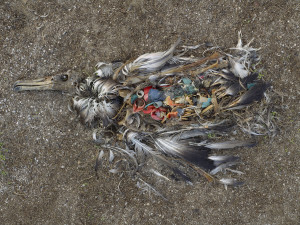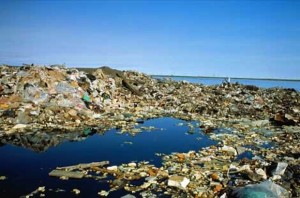There is a growing problem in our oceans that many people don’t know about or don’t think about when they toss a plastic cup or bottle in a trash can and not in a recycling bin. Huge trash vortexes have formed in the oceans major and minor gyres because of negligent human disposal of plastics. Plastic is “ a material designed to last forever, yet used for products that we throw away.” These non-biodegradable materials are ruining our water systems and hurting marine habitats because people do not realize the consequences of buying products that have plastic packaging and worse, the majority do not even bother to recycle the plastic. People need to become aware of the ever-increasing pollution problem and take measures to alleviate and eventually rid the oceans of this hazardous waste. 
Gyres are massive whirlpool-like currents in our oceans that are caused by wind and the earth’s rotation. See the flow of the Pacific gyres here. There are five major oceanic gyres across the world and they are all believed to have piles of plastic trash circling in them because of the water bottles, utensils, plastic bags, and other plastic waste humans dispose of into the environment on a regular basis. The largest one, the North Pacific Gyre, is nicknamed the Great Pacific Garbage Patch and the trash area is approximated to be twice the size of Texas. In the Pacific Ocean alone, it is estimated that 11 million tons of floating plastic covers 5 million square miles between California and Hawaii and those numbers are still increasing. This is just one major trash gyre out of many larger and smaller ones that persist and collect plastic waste worldwide.
Out of all of the plastic we produce, only five percent of it is recycled, fifty percent goes into landfills, and the other forty-five percent disappears into our water systems and eventually finds its way to these whirlpools of trash. The plastics in these currents resist biological and chemical degradation and some of it has sunk while some floats on the surface. Sunlight causes some of the plastics to break apart into small particles the size of confetti, but they never full degrade and the small plastic pollution is increasingly becoming a danger to the marine wildlife. “A single one-litre bottle could break down into enough small fragments to put one on every mile of beach in the entire world.” Plastic pollution now outweighs zooplankton six pounds to one. To make matters worse, there are actually hazardous chemicals that are in these vortexes as well. Gasoline, motor oil, antifreeze, and fertilizers are just a few of the “Persistent Organic Pollutants,” or POPs, that are not only carcinogenic, but they are also absorbing into the insoluble plastic particles in high concentrations.
The biggest concern with the trash gyres are their effects on the marine animals who mistake the toxic pollution for food. This is causing major problems in the food chain that potentially are cycling all the way back around and contaminating human seafood. Small marine animals mistake the tiny pieces of plastic for phytoplankton and the toxic compounds build up in the organism in a process called bio-accumulation. The plastics cannot be broken down and impact the entire food chain. Larger animals also consume the plastic because they think it is food. Sea turtles and birds are two animals who are largely impacted by the plastic because they consume the plastic which then is stuck in their digestive systems. The animals starve to death because there is no room left in their stomachs for their normal food and after the carcass decomposes, the intact plastic still remains behind to harm more unsuspecting victims.
The plastic pollution in the water is estimated to take anywhere from 400 to 800 years to break down, but people cannot stand by and wait for that to happen because there is continually more waste being added to the gyres. This is an enormous and growing problem, but that does not mean it cannot be solved through hard work and the changing of human ways. Small-scale efforts are now being made to attempt to clean-up the trash gyre in the Pacific Ocean and people need to be more aware of the issue so that plastic trash can be kept out of the water in the first place. People need to make personal changes in their own lives to reduce their plastic usage, start recycling everything, use non-toxic chemicals in their homes and gardens, and spread awareness about this serious issue. If people are more conscious about the plastic and chemicals they use and dispose of, then maybe the world will see a day when toxic plastic and foam trash doesn’t litter the beaches and marine life will thrive once again.



